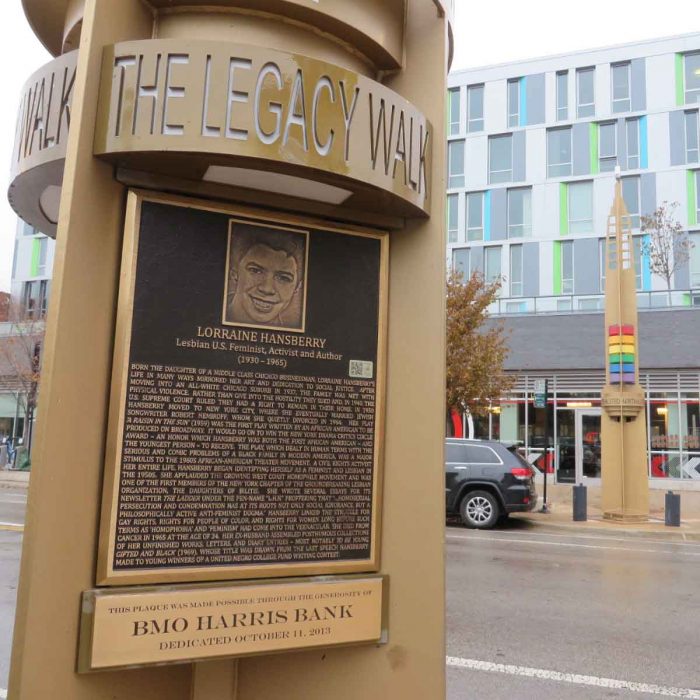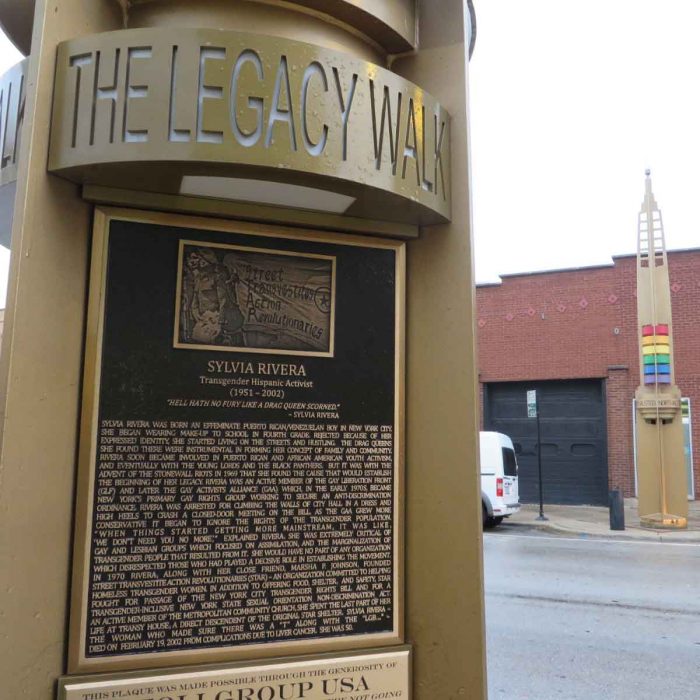Talking & Walking LGBT History in Chicago
20171120

Last week our project manager Amanda Davis was in the great city of Chicago to speak at PastForward, the annual conference of the National Trust for Historic Preservation. Several diversity and inclusion sessions, which concentrated on historic preservation’s role in activism and social justice issues, were held at the historic Palmer House downtown. At the LGBTQ session, Amanda spoke about our Project’s efforts to nominate sites to the National Register of Historic Places, raise awareness of LGBT history through our online interactive map, and work with others in the community to advocate for the protection of these significant spaces. She was thrilled to hear from a number of attendees who are also working on (or hoping to start) similar projects throughout the country.


The following day, Amanda spoke at one of the conference’s Learning Labs, a panel discussion on the importance of using technology to engage the public with history. The session was also a wonderful opportunity to showcase how we as storytellers can reach more diverse audiences through different types of media, both online and in person.

Amanda also had the chance to take the “El” up to Boystown, Chicago’s historically gay neighborhood, to see the Legacy Walk, billed on its website as “the world’s only outdoor museum walk, traveling installation, and youth education program dedicated to combating anti-gay bullying by celebrating LGBT contributions to history.” Located along several blocks of North Halsted Street – between Belmont Avenue and Grace Street – the commemorative project features bronze plaques of notable LGBT figures on “rainbow pylons.” New plaques are added every October 11th (National Coming Out Day). See the end of this post for more photos.

Before leaving Chicago, Amanda also stopped by the former Lincoln Park home of pioneering gay rights activist Henry Gerber. In 2015, the house was listed on the National Register of Historic Places and, in the same year, became only the second National Historic Landmark recognized for its significance to LGBT history (the first being Stonewall in 1999). Before Stonewall, the Mattachine Society, and the Daughters of Bilitis, Gerber founded America’s first LGBT rights organization – the Society for Human Rights – in 1920s Chicago. As a member of the US military he was also stationed (and faced harassment as a gay man) on Governors Island in New York City from the late 1920s to 1945.
Being able to talk about our work in Chicago, learn from others, and see some of the Windy City’s LGBT historic sites in person was a great treat. The Project looks forward to continuing the conversation at next year’s PastForward conference in San Francisco!





Multimedia
Hosted by Vimeo
Hosted by Soundcloud